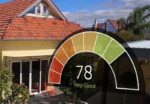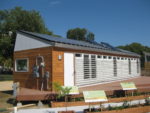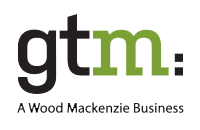Barry Cinnamon of Cinnamon Solar did a helpful podcast with Tom Kimbis, the Executive Vice President and General Counsel of the Solar Energy Industries Association (SEIA), on self regulation in the solar industry. In the podcast, Mr. Kimbis discusses common consumer issues within solar and steps SEIA has taken to improve consumer protection, including a new suite of products.
SEIA processes solar consumer complaints directly and from a variety of other sources. Mr. Kimbis categorized these complaints into the following groups:
- General Consumer Misunderstandings – As with any new product, there can be misunderstandings between a seller and buyer and solar is not immune to these challenges. There is a real need for greater consumer education around solar buying basics, including how to choose a solar contractor, determining the right solar system equipment and understanding solar financing options (including lease vs. buy). The vast majority of complaints fall into this category.
- Advertising – Mr. Kimbis notes that the rules around marketing practices can be complicated for solar contractors to understand. In most cases, when SEIA contacts a solar company about marketing practices, the root cause is a misunderstanding of marketing laws and the company makes immediate changes. Examples of deceptive marketing including using phrases such as “free solar panels” when describing power purchase agreements. There have been several recent reports in Utah of solar telemarketing scams.
- Read Bad Actors – There are the exceptions of real bad actors that intentionally deceive consumers by misrepresenting contract terms or savings estimates. SEIA takes quick action to report these companies to state regulatory agencies.
Mr. Kimbis noted that solar is a popular topic for news outlets, so both positive and negative stories may attract more attention than other home improvement of consumer financial sectors.
Proactive Actions By SEIA
SEIA is developing a suite of products that will be available online that are designed to increase transparency for solar consumers. Some of these products are available on the SEIA website already under the consumer protection portal. These products include:
- Code of Conduct – All members of SEIA will agree to follow a business code of conduct and be provided materials on best practices to stay within the code. Mr. Cinnamon noted that many of the code stipulations are common sense practices that any solar contractor would take to ensure customer satisfaction and a healthy referral channel.
- Complaint Forms – SEIA has made a complaint form that can be submitted directly to SEIA or via a state agency. SEIA will handle these complaints quickly with its member companies.
- Guides – SEIA has published guides for residential solar as well as guides for landowners considering leasing land to solar developers. Solar land use in rural farm areas has made headlines recently.
- Model Contracts – SEIA provides model contracts to solar contractors to ensure proper disclosures.
- Disclosure Forms – SEIA provides three disclosure forms for each of the most common solar transactions: purchase, power purchase agreement and lease. These forms will be distributed through other consumer protection agencies, including the BBB and are designed to help customers understand and compare offers.
Simple Advice on Solar
Mr. Cinnamon’s advice to customers before choosing a solar installer is to make a simple spreadsheet to compare offers. This step ensures that they understand the details of each offer, including price per watt and contract terms. As we noted in our article on Warren Buffett and solar, you should never invest in something you can’t understand and the same principle applies to solar.
Tom Kimbis Bio
Tom Kimbis is the Executive Vice President and General Counsel of the Solar Energy Industries Association (SEIA). Tom provides high-level guidance and support to SEIA’s policy initiatives at the state and federal level. He has been working in renewable energy since 2000, when he began supporting research, analysis, legislative, and planning efforts across all energy efficiency and renewable energy technologies for the U.S. Department of Energy (DOE).









